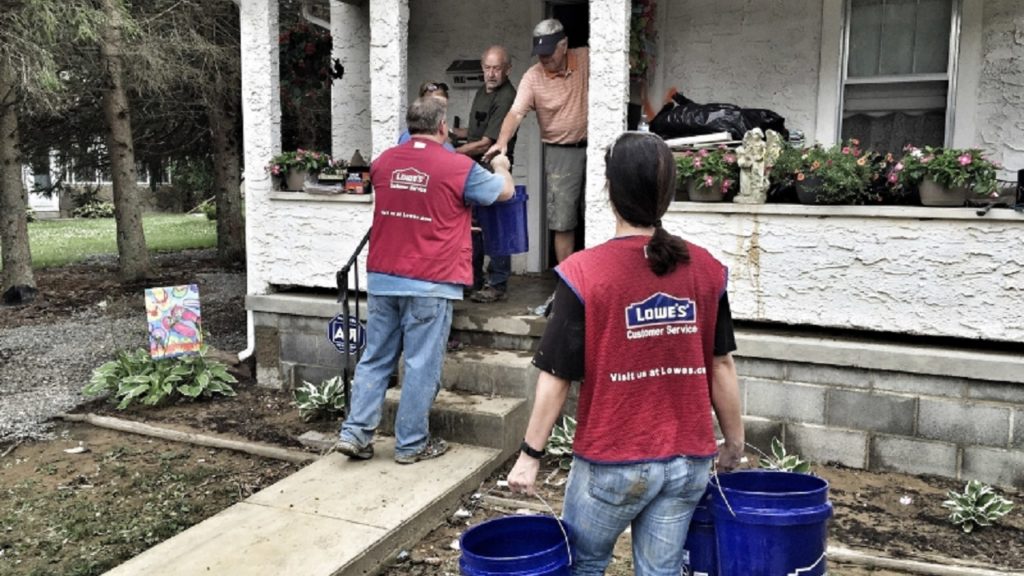 Special to the Philanthropy Journal
Special to the Philanthropy Journal
By Amit Patel
 What if Amazon, Netflix, or Uber were nonprofits that relied on fundraising to function? As odd as the proposition may seem, these companies can teach nonprofits a thing or two about customer engagement and retention. In a recent survey Accenture conducted across six countries, we learned that donors are seeking, among other things, a more personalized experience.
What if Amazon, Netflix, or Uber were nonprofits that relied on fundraising to function? As odd as the proposition may seem, these companies can teach nonprofits a thing or two about customer engagement and retention. In a recent survey Accenture conducted across six countries, we learned that donors are seeking, among other things, a more personalized experience.
Our findings indicate that a more personalized donor experience can result not only in richer customer engagements but also in potentially higher levels of giving. In fact, nearly 60 percent of respondents said they’d donate up 10 percent more if, for example, fundraisers could be more explicit about where their money is going.
Going a bit deeper, roughly 80 percent (83 percent in the US alone) believe it is “important to know the real outcomes of their charitable donations or volunteer work with nonprofit organizations.”
While pleasing the donor is important, our study paints a broader, clearer picture of the future of giving. Namely, although the charitable nonprofit field is a unique discipline, it is not completely dissimilar from the way some successful startups—and entrenched businesses—operate. Our findings indicate that a majority of donors think charitable organizations can “do better” across a number of areas, particularly around staying relevant and visible.
For example, between 60 and 70 percent of donors say nonprofits should use more digital technology, such as social media, online portals, mobile apps and handheld devices to communicate with people they interact with and serve. At the same time, less than half the respondents say nonprofits use social media effectively. And nearly half would like the option of contributing to charities digitally.
Clearly, nonprofits can benefit from lessons from the for-profit world, specifically around customer service. While the majority of donors said they value a personalized experience when interacting with nonprofits, only 44 percent are satisfied with the level of personalization they currently receive.
What can nonprofits do to change the perception, connect more consistently with donors and drive funding levels higher?
It’s all about the customer
Simply put, today’s consumers (aka donors) are looking for the highest value and, again, best experience for their dollars. The Amazons, Ubers and Netflix of the world understand how to recognize, remember and engage their customers. They grasp how to stay relevant and singular in an increasingly crowded marketplace with a chorus of competitors growing louder each day. And they offer their customers consistent, relatable, valuable content. They understand customers’ passions and interests, and help fulfill them to the extent possible.
The key to all of this is, of course, personalization—critical to raising effectiveness, satisfaction, retention and loyalty. And although nonprofits could stand to boost their tech savvy, technology alone is not the answer.
In fact, companies (and likewise nonprofits) that use technology only to optimize processes for their own efficiency and growth can expect less than stellar results:
- Loss of emotional connection—Impersonal treatment by Interactive Voice Response systems and stick-to-the-script service reps have created a market where people rush to disruptors that offer a better experience—from big box stores to Amazon, or taxis to Uber.
- Digital freedom—Although people are disconnected emotionally, they’re much better connected digitally, able to choose Netflix and Hulu over Comcast, or Quicken Loans over their local bank.
- Time as a valuable resource—For many busy people, time is more valuable than money—they won’t wait on the phone or enter their personal information multiple times if alternatives charge them a little more for a better, faster experience.
- Consumerized expectations—Donors expect speed, simplicity and personalization based on digital experiences in their everyday lives.
What it means for nonprofits
In the nonprofit world, these findings indicate that a successful personalization experience means showing donors that their contributions make a real difference. Indeed, in the US alone, our study shows, a full two-thirds of respondents say they value real outcomes in creating a personalized experience.
While there is not a one-size-fits all solution for charities and nonprofits to improve the personal experience for their donors, they can start by understanding the audience segment. For example, does donor Type A prefer attending a gala while Type B enjoys family-based or more rigorous activities, such as a 5K race?
Essentially, donors want to know and understand where their money is going—how it’s being used and what the results are. Is it making a child happy, feeding a family, helping find a cure for cancer? This links back to nonprofits helping donors fulfill their own passions—a cancer survivor seeing her money spent on research, for example. Breaking down segmentation based on in-depth knowledge of nonprofit audiences is an important first step toward engaging supporters and encouraging greater support.
Amit Patel is a Managing Director and Nonprofit Group Leader at Accenture, where he helps organizations define their strategic objectives and develop solutions to improve their outcomes.







